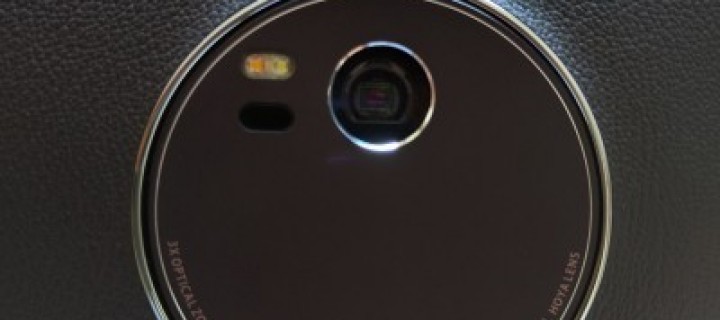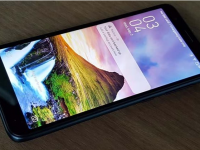Asus had a great run last year, the Asus Zenfone 2 was really successful and the fact that it was the first phone to have 4GB of RAM helped it immensely. The Asus Zenfone Zoom is a concept turned reality thanks to the popularity it gained after first being showcased at CES 2015. The Zoom is basically a Zenfone 2 with a camera zoom hardware slapped on the back along with improved internals. So if you have used a Zenfone 2, the device looks pretty much the same on the front, pick it up and that’s when you notice the device is completely different.
Design
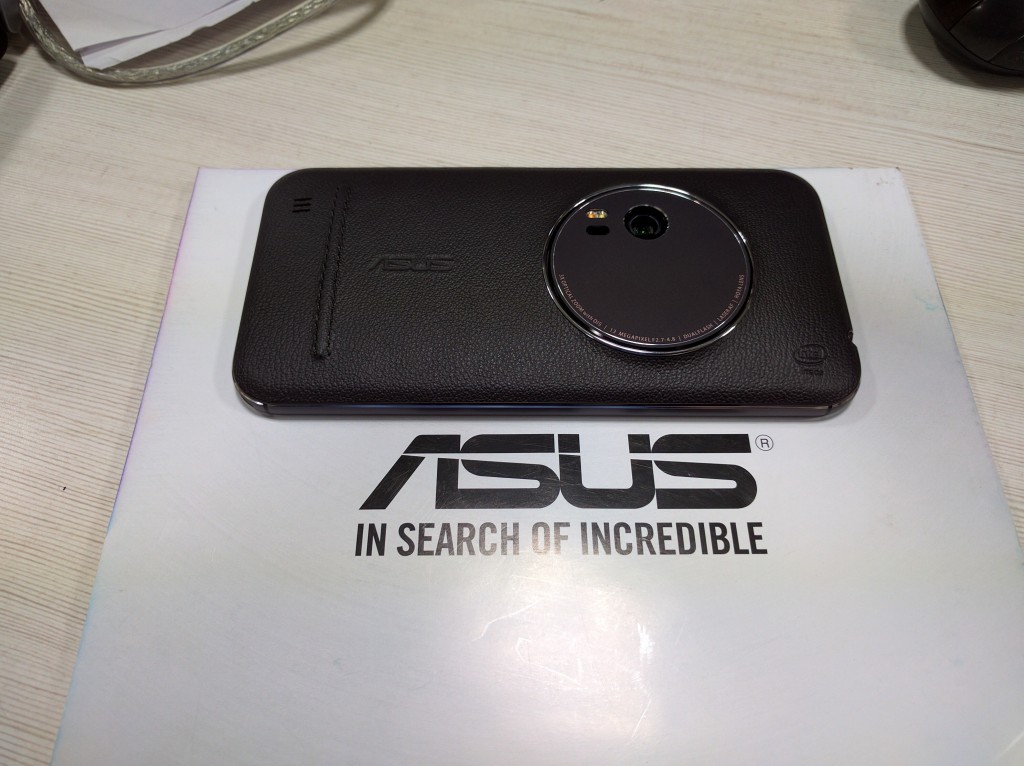
The Asus Zenfone Zoom looks like the Zenfone 2 with a camera module stuck on the back and that is the easiest way to explain the design. They haven’t just done that, grab the phone in hand and the premium build quality can be felt. The metal built body is curved to fit in hand well, ensuring it isn’t slippery to hold. The back on the phone is completely different with leather used to cover the back panel. While it is leather, it doesn’t feel like the leather back on the Moto X 2nd Gen but more like hard plastic. The right side of the phone houses all the buttons on the button with the volume rockers on the top and the power button placed slightly above the center. The button positioning is spot on and hitting the buttons is easy during single-handed use, the lower half of the right side house the dedicated camera shutter button and a small video record button above it.

The left side of the phone is completely blank with an eyelet at the bottom to attach a lanyard, Asus also provides a leather lanyard in the box. The Zoom has a microUSB port positioned at the bottom with the microphone next to it, the 3.5mm headphone jack along with the noise canceling microphone is located at the top. The back has a huge circular element that houses the camera components with a metallic trim surrounding it. This adds to the premium looks of the device while highlighting the strength of this smartphone.
Display
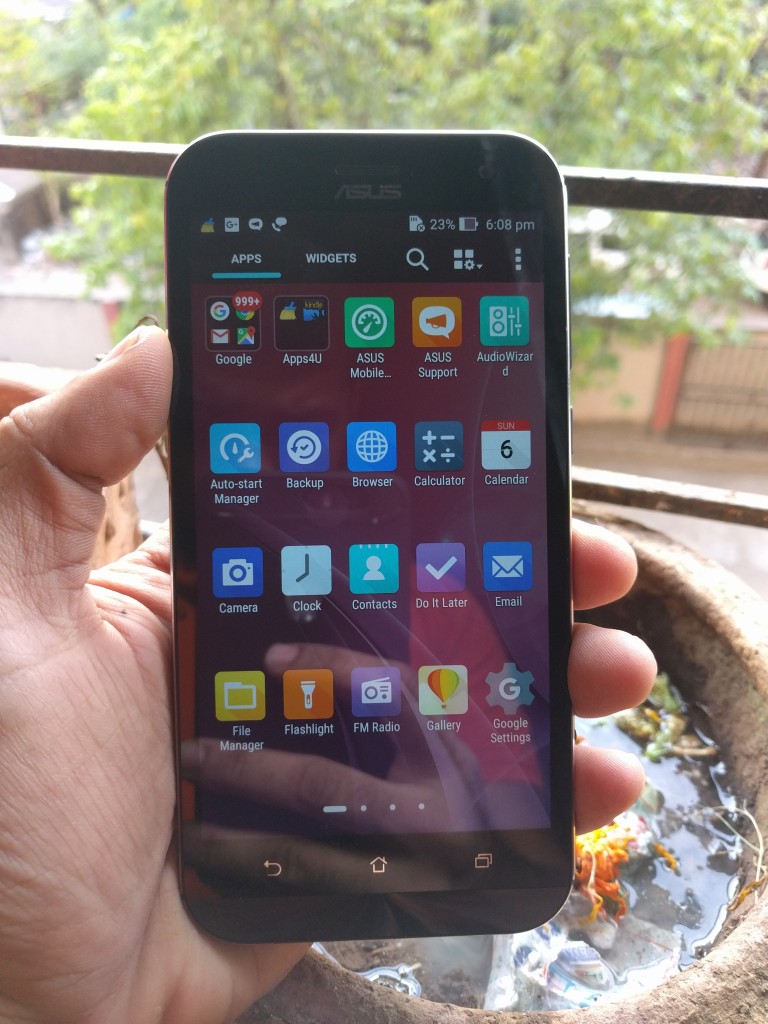
The Zoom has a 5.5 inch LCD display with a resolution of 1920 x 1080 pixels with a pixel density of 400PPI. The display is protected by Corning Gorilla Glass 4 to prevent it from cracking up with the occasional drop. The display has good viewing angles and the sunlight visibility is good (can get a little reflective at times). The software has a lot of viewing modes where the user can tweak the display as per their color preference. The inbuilt blue light filter is also useful when viewing content at night. While the hardware in the phone is good, it is worth noting that other smartphones in the same price range come with a Quad HD display panel.
Software & Performance
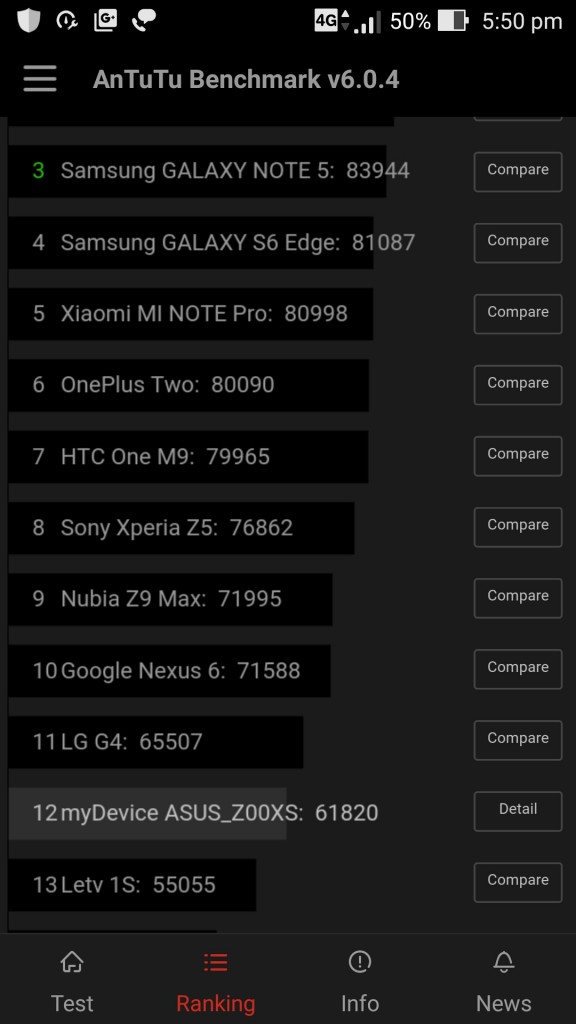
While Asus has used premium materials for making the phone, the internals have been boosted proportionally as well. I remember Jerry Shen claiming on stage that they have used netbook rivaling processor in the Zoom. One look at the spec sheet and it seems convincing, the Intel Z3590 is a Quad Core Processor clocked at 2.5GHz. Asus is among the few manufacturer who uses an Intel SOC while most others stick to Qualcomm or MediaTek for their processing needs. The phone also have 4 GB of RAM and it isn’t surprising considering the Asus Zenfone 2 was the first smartphone to have 4GB of RAM onboard. We faced no issue when using the device, it worked smoothly and the 4GB RAM ensured there was no lag. The Zoom gets 128GB of internal storage that can be expanded via a MicroSD card slot under the back cover. While one would rarely need a card slot for a device with 128GB of internal storage but this is for photographers who like to quickly transfer their pics. The device does get a little warm when playing some heavy games or running benchmarks but not uncomfortable levels. Talking of benchmarks, the Zoom manages a score of 61820 which is good for a phone at this price point but then again performance isn’t the USP of this phone.

Asus Zen UI is what is running on the Zoom on top on Android 5.0 Lollipop. For those who are curious, yes Asus will be updating the device to Android 6.0 Marshmallow with an update expected soon. The UI has remained the same, an app drawer for Apps and a separate tab for widgets. Asus has provided a whole lot of apps from their end while some are useful, the others not so much. The support app My Asus serves as a direct link between the manufacturer and the consumer. There are a couple of other apps like ZenTalk and Zen Circle that has tips from Asus and the other shows user shared content from then Zenfones. There is some bloatware that came preloaded onto the phone that dampens the experience on the smartphone and we would recommend that you uninstall it.
Asus has put apps on the Play Store and the result is faster app updates and new feature introductions without waiting for a major software push from their end. As per our observation, these apps are updated frequently and new features do come in a lot faster compared to the other brands.
Camera
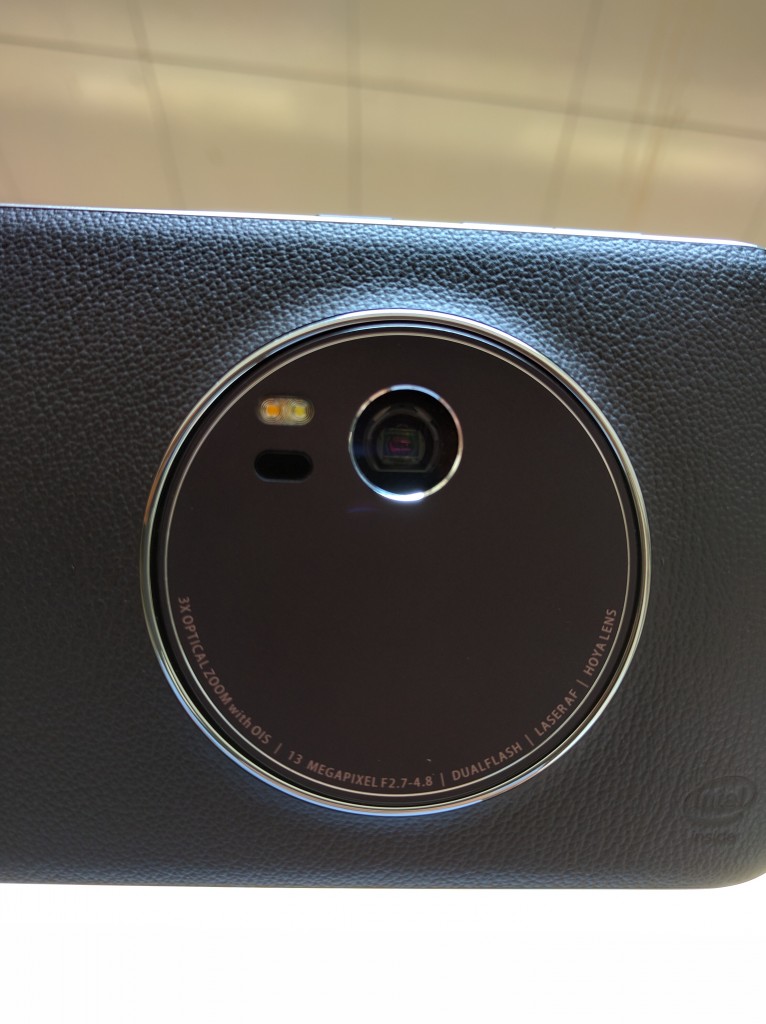
Asus has taken Camera seriously when it comes to the Zoom. It has a 13-megapixel camera at the back and a 5-megapixel camera on the front. The primary 13-megapixel camera gets 3X optical zoom along with Optical Image Stabilization (OIS), Dual Tone Flash and Laser Auto Focus. The optical image stabilization minimizes shakes which result in a blur-free image and a stable video output. While most of the smartphones have a 6 lens, the Zoom has 10 elements Hoya Lens which help to get the right amount of light on the sensor resulting in a crisp image. The 4 Stop OIS allows the camera to adjust its shutter speed better allowing it to have a better range of shutter speed, this ensures that the image clicked is stabilized and clear even in low light.

Without Zoom

With 3X Optical Zoom
The camera sensor positioning is unique as the Zoom uses a periscope-like arrangement between the sensor and the lens. This helps reduce the bulk of the camera making the phone amongst the slimmest with 3X optical zoom. The back also curves and is thin at the edges with a thickness of 5mm.

PixelMaster at work
The Pixelmaster technology that Asus had introduced in its smartphones makes an appearance again and this time, the camera makes full use of the software. All the serious camera hardware isn’t limited to just software, you can take complete manual control in the camera app. The manual function gives you control on the shutter speed, ISO, aperture, white balance and focusing distance to name a few.

The dedicated shutter button is a rare occurrence on a smartphone these days but feels completely at home on the Zenfone Zoom. It is a two stage button where a light tap causes the phone to focus and another step trigger the click. There is also a tiny button right next to it which does the video capturing. A quick press of any button from standby will start the camera is photo or video mode respectively.
Battery
The Zenfone Zoom has a 3000mAh nonremovable battery which is hidden under the SIM and MicroSD card slots. Battery life is quite important in a smartphone and in order to deliver good battery life Asus dropped the idea of a Xenon Flash on the Zoom. While the 3000mAh battery may seem small when compared to the likes of the Nexus 6P it is adequate. For started the Intel Processor in the Zoom is more efficient and sips battery frugally compared to the snapdragon chipsets. When the battery does drop low, the provided charger has quick charging functionality to charge it up quickly. The charger has two modes of charging, 2A at 5V and 2A at 9V
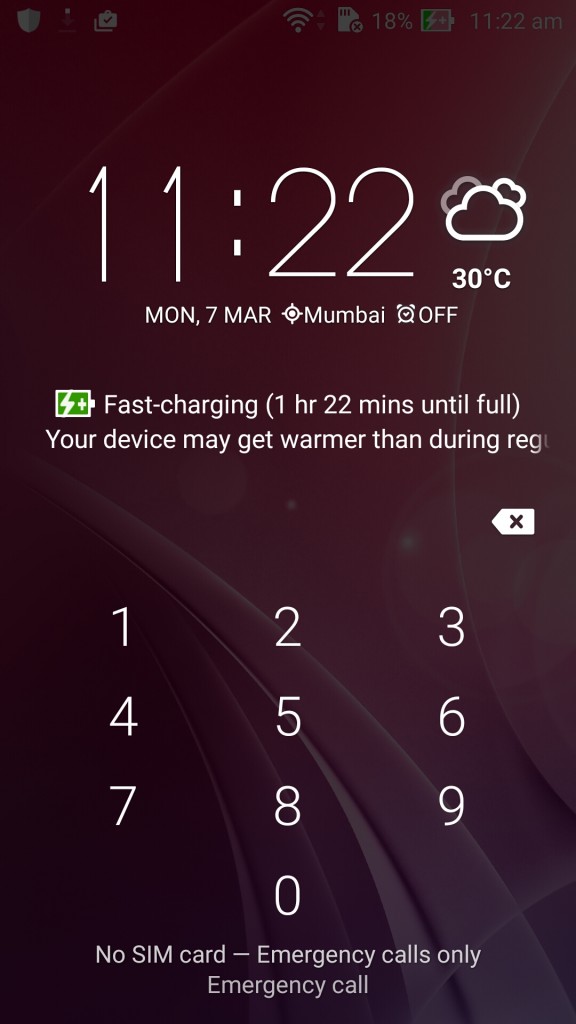
When the battery does drop low, the provided charger has quick charging functionality to charge it up quickly. The charger has two modes of charging, 2A at 5V and 2A at 9V delivering 10W and 19W of power respectively.While charging from a lower battery percentage the device charges at 9V while displaying Quick Charging on the screen. Once the battery reaches a particular percentage (70%-80%) the charger switches to the lower charging specification to preserve battery. The device can go on for one working day without requiring charge, we could manage more with light use. The battery drops a little faster when the camera is used and it isn’t surprising considering the camera tech on board.
Verdict
The Asus ZenFone Zoom is a purpose built device, the main focus is on the camera and Asus has done a good job. There have been no compromises in other areas as well, the Intel Processor delivers good performance and the 4GB of RAM onboard ensure lag free usage. The Zenfone Zoom is priced Rs 37,999 in India and Rs 39,999 for the kit which includes a tiny tripod and a flash. While the kit pack seems to offer much higher value, the price does make us think a little. The Nexus 6P sells for roughly the same price, has a stellar camera, a powerful processor, a fingerprint scanner, Quad HD display and is promised the quickest Android updates. The Zenfone Zoom is good but it all comes down to what you want to do with the phone you wish to buy. If you use your smartphone like a camera only then the Zenfone Zoom makes a case for itself. The advanced camera modes and the 3X optical zoom is not available in any other smartphone in the market. But if you want a good all-rounder, then the Nexus 6P would be my choice.

